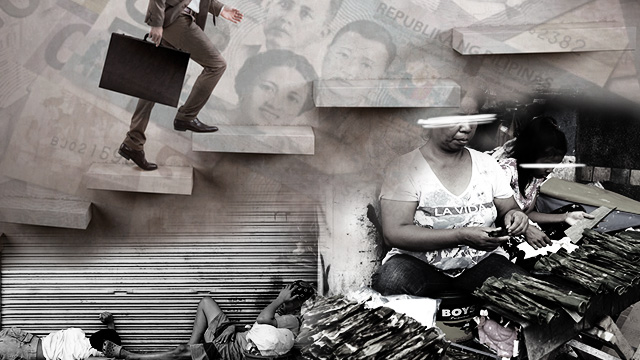
MANILA, Philippines– Ahead of the 2019 elections, youth leaders urged Filipinos to be critical of campaign platforms and promises, and vote for candidates who will champion human rights.
In a press conference on Tuesday, April 9, national youth movement #WeTheBrave said that young voters have the power to make significant change in the upcoming midterm polls.
According to data from Commission on Elections, the youth – especially those born in the mid-90s and early 2000s – comprise more than 18 million of the registered voters. (READ: First-time voters: ‘As young people, we could change something’)
In an interview, Active Vista's Domar Balmes said that a lot of young people are now disengaged and prefer to avoid talking about political issues. (READ: Laguna youth on #PHVote: 'We will not sell our vote')
"But we still believe that the youth and the youth vote can do a large impact on our nation, and that’s why we are gearing towards a more broad, more creative, and more dynamic collective of young people," said Balmes.
The #WeTheBrave movement represents some 600 youth leaders of more than 300 youth groups all over the Philippines, including young artists, environmentalists, and mental health advocates.
Courageous youth
Leni Velasco, executive director of Active Vista, disagreed with the notion that the youth nowadays are apathetic, stressing there are several ways that they contribute to society. (READ: Youth groups file ethics complaint vs Aguirre over fake news)
“The courage of the youth of this generation to fight politically orchestrated spread of disinformation, to oppose the creeping authoritarianism, and to stand up against discrimination, misogyny and repression gives a beacon of hope to our people in these dark and trying times,” she said.
With the May 2019 polls looming, #WeTheBrave suggested 5 "brave" things the youth can do for the country. These include asserting their vision of the future, being at the frontlines of political discourse, joining forces with fellow youth, challenging candidates to help build a better future, and targeting their vote for candidates who stand for human rights.
Youth in the election
#WeTheBrave also presented a youth agenda for human rights.
“The election is a crucial moment for our country as it shall set the direction of our future as a nation. We, the youth, shape the future of this nation. We are a potent social force. We are one third of the 110 million Filipinos. We have the power to make meaningful change happen,” the group said in a statement.
With Araw ng Kagitingan serving as a timely reminder to take a stand, the movement called on the youth to invoke the courage of national heroes and choose to uphold sovereinty and human rights.
Rafaela David, executive director of the Center for Youth Advocacy and Networking (CYAN), added the urgency of defending the rights of the youth.
“It's very urgent because our rights are being taken away day by day. At 'yung mga kabataang katulad natin, nakikita na lang natin na sila ung nagiging biktima ng patayan, fake news, violence within their campuses, kawalan ng trabaho. And as their rights are being threatened, we say that enough is enough," David said.
(The youth like us are becoming the victims of killings, fake news, violence within their campuses, unemployment.)
She also called on today's youth to look back at the youth of yesterday. (READ: Cebu youth to fellow voters: Research on Senate bets)
“Ang mga kabataan ang pinakaunang magigiting na lumaban sa mga mananakop sa atin. (The youth were first to courageously fight our oppressors.) We take inspiration from them. The youth of yesterday showed us that they can and they have won our rights and our freedom. And we can, again,” David added. – with reports from Jillian Siervo/Rappler.com





























































